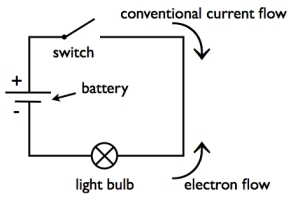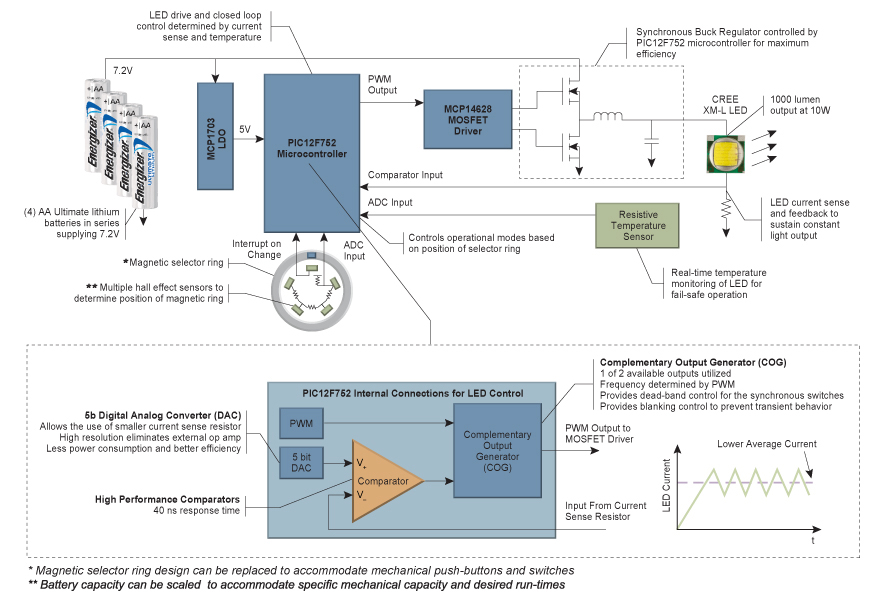Whenever the subject of flashlights is brought up I usually find myself at a loss. We rely so much on electricity however my knowledge of it is rudimentary at best. I took some classes in high school that dealt with circuit boards and what not but whatever I picked up then is long gone now. So if something arises with a flashlight where it starts to malfunction I would rather just throw it away than deal with it.
Back in the halogen days there were issues with bulbs burning out or breaking, but that was always an easy fix. Usually there were spare bulbs to be found around the house to replace the burnt out bulb in your flashlight. Here is a diagram of what the circuitry would look like in a conventional halogen flashlight:
Then along came the LED light. The LED light was a milestone in flashlights. The bulbs were more durable lasting thousands of hours more than halogen bulbs at a fraction of the energy cost. This came with a price though: LEDs have the tendency to heat up more than the conventional bulb with the old style of circuitry shown above. As seen below, the LED flashlight is more complex (to prevent overheating, etc) than its predecessor:
LED lights have also opened the door for variable type outputs both on intensity (LOW, MED, and HIGH) and flashing modes (SOS and STROBE). This is also attributed to their durability that they bring to the light market. These modes can be selected by using a combination of switches (shown above) and sensors with a magnetic ring (shown below). The ring with a magnet will rotate around and depending on which sensor is facing the magnet will determine the type of output.
As you can see now the LED flashlights today carry a combination of microchips, sensors, magnets, etc. The sky is the limit with what we can do with these LED flashlights. With the development of capability with what the LED can do, we are only limited with what kind of power source that we have available: LED flashlights are capable of running off both standard batteries and Lithium Ion. However that is a whole different story of its own.



